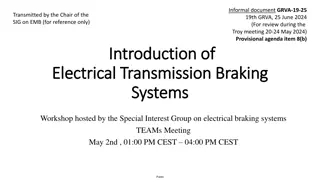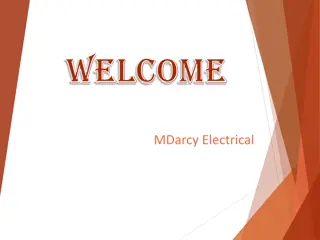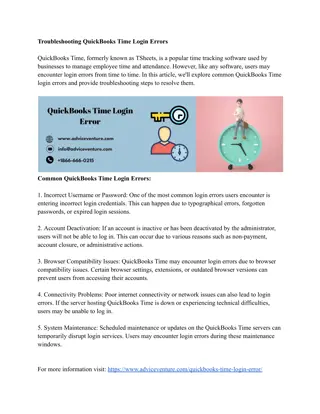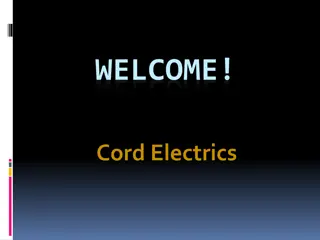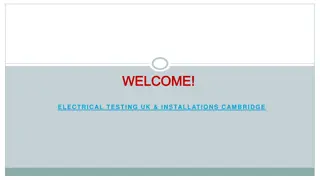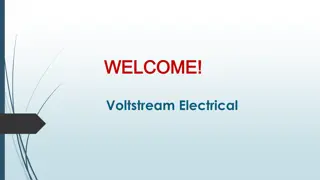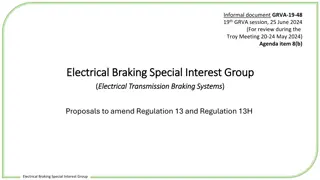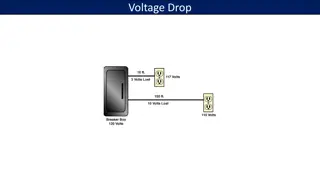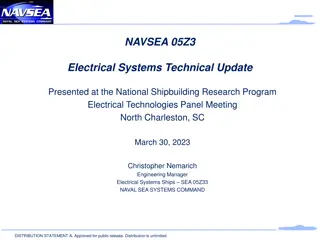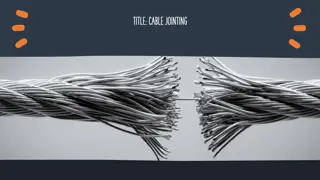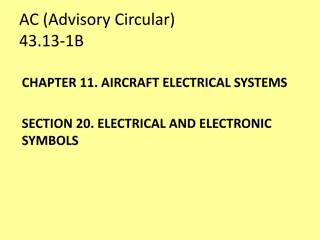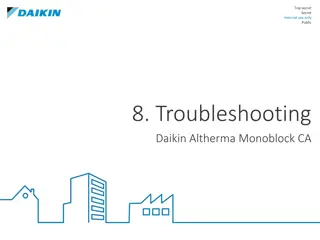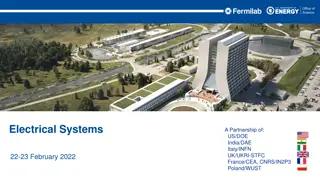Understanding Electrical Systems and Troubleshooting Techniques
Explore the fundamentals of electrical power generation, distribution, and troubleshooting methods. Delve into the roles of fuses, circuit breakers, panel boards, and more in ensuring safety and efficiency in electrical systems, from generation stations to branch circuits. Learn about key components such as transformers, meters, and test equipment used in diagnosing and resolving electrical issues.
Download Presentation

Please find below an Image/Link to download the presentation.
The content on the website is provided AS IS for your information and personal use only. It may not be sold, licensed, or shared on other websites without obtaining consent from the author. Download presentation by click this link. If you encounter any issues during the download, it is possible that the publisher has removed the file from their server.
E N D
Presentation Transcript
SOLVING ELECTRICAL PROBLEMS INMT 2345 - 01 Vern Wilson
Power Generation Electrical Distribution Systems Fuses Current capacity Understanding Basic Principles Diagnosing Problems testing for continuity Safety Communication and Diagrams Test meters
Starts with electrical generation stations Turbine drivers coal - steam Generators driven 500,000 kW Transformers Into high-voltage transmission lines Raise voltage to high level Over 100,000 volts Substations Reduce voltage to 2,300 to 13,000 V Plants Transformers down to 480 V
Plants have their own generators Run by gas turbines Most efficient for majority of plants Run by sawdust or other waste Generate steam Drive generators
From Service Entrance Conductors Metered Main Switch Fuses Circuit Breakers Feeders - Plant distribution Branch Circuits Switchgear
Definition Any device that performs a specific electrical function For example Circuit breaker Main purpose to protect the power circuits by interupting and isolating any short circuit Panel boards contain circuit breakers or fuses Motor Controller Center services several work areas
Each panel board has its own feeder from the substation Secondary stations can be created by subfeeders Circuit breakers protect the feeders Branch circuits are the final connection with 15 to 50 amp protection Know your plant situation
Fuses small strip of metal that melts A 15 amp fuse will melt if > 15A applied to it Motors require excess current to start up Fires Circuit Breaker can be reset Has switch contacts that open if current increases above capacity - A 15 amp circuit breaker will open if > 15A applied to it Either electromagnet or small heater + bimetal strip
LEFT OFF HERE APRIL 7, 2010 Amount depends on diameter and material Amount of voltage depends on kind of insulation Gauge numbers represent diameter Hi current = Lo gauge numbers What size of wire will handle 50 amps? Page 105 8 at less than 90 F Never replace with smaller wire
Learn the system before attempting maintenance
Power source Continuity - testing Faulty part
Lock out Brain in action first Hands Draw up how the wires are connected before maintaining
Ammeter Antenna Battery Circuit Breaker Fuse Ground Lamp Switch Not Connected Wires





